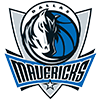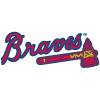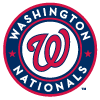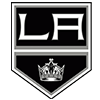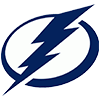Last week I drove to three minor-league games to get in-person looks at over a dozen notable prospects.
The first stop was in northeast Ohio to watch the Indians' short-season affiliate Mahoning Valley host the Mets' short-season affiliate Brooklyn. Mahoning Valley's roster is loaded with young power hitters, and Danny Salazar was there on a rehab assignment, so I got a nice reminder of what high-quality big-league stuff looks like from behind the plate. Brooklyn's roster was a non-factor in the decision to attend this game.
The next stop was Asheville, N.C., which is at least a 65-grade town, to see the Rockies' Low-A affiliate host Hickory, the Rangers' Low-A affiliate. This wasn't a very well played game, but there was plenty of talent on the field, despite the fact that Colton Welker (the Rockies' No. 3 prospect) was out with a groin injury and Vince Fernandez (the Rockies' No. 18 prospect) was out with an oblique injury.
The final stop was Pensacola, Fla., to see the Reds' Double-A affiliate host Mississippi, the Braves' Double-A affiliate and home of the best rotation in the minors. This was the highlight of the trip, as there were multiple top 60 prospects playing, and a half dozen others who are either in the top 200 or have been ranked in the top 200 in past years.
Here is a breakdown of the notable players I saw in action, and the players I did not get to see, but was able to interview.
Last week I drove to three minor-league games to get in-person looks at over a dozen notable prospects.
The first stop was in northeast Ohio to watch the Indians' short-season affiliate Mahoning Valley host the Mets' short-season affiliate Brooklyn. Mahoning Valley's roster is loaded with young power hitters, and Danny Salazar was there on a rehab assignment, so I got a nice reminder of what high-quality big-league stuff looks like from behind the plate. Brooklyn's roster was a non-factor in the decision to attend this game.
The next stop was Asheville, N.C., which is at least a 65-grade town, to see the Rockies' Low-A affiliate host Hickory, the Rangers' Low-A affiliate. This wasn't a very well played game, but there was plenty of talent on the field, despite the fact that Colton Welker (the Rockies' No. 3 prospect) was out with a groin injury and Vince Fernandez (the Rockies' No. 18 prospect) was out with an oblique injury.
The final stop was Pensacola, Fla., to see the Reds' Double-A affiliate host Mississippi, the Braves' Double-A affiliate and home of the best rotation in the minors. This was the highlight of the trip, as there were multiple top 60 prospects playing, and a half dozen others who are either in the top 200 or have been ranked in the top 200 in past years.
Here is a breakdown of the notable players I saw in action, and the players I did not get to see, but was able to interview.
Nick Senzel, 3B, Pensacola (Reds)
Senzel is very much a known commodity in dynasty-league circles at this point, and he was as advertised. He hit an opposite-field double off Soroka and also struck out on a nasty three-pitch sequence from the Braves' right-hander, which is a fine outcome for a hitter's 19th game at Double-A in a righty-on-righty matchup with one of the best pitchers in the league. Senzel's speed was on full display on the double, and considering I expect him to reach the big leagues around this time next season, he should still have enough speed to contribute double-digit steals for a few seasons. He has a smaller frame (6-1, 205 lbs.) than the typical third baseman, but he is not the typical third baseman. He could hit .285 with 15-to-20 home runs and 10-to-12 steals while hitting second in a big-league lineup. Eventually when the speed falls off, the power should creep up into the 25-homer range, and he could post some .300 batting average seasons in his prime years. The word around the Blue Wahoos was that Senzel is expected to finish out the 2017 season there, starting 2017 at Triple-A and then getting a promotion once there is an opening at third base and the Reds have gained an extra year of service time.
Leody Taveras, OF, Hickory (Rangers)
Taveras has prototypical size for a potential five-tool center fielder. He is a very athletic 6-foot-1, 170 pounds, and unlike many 18-year-olds at Low-A, his body should mature in a way that allows him to remain a plus runner into his mid-to-late 20s. His quick-twitch movements and observable swagger scream future star. He may not be performing at Low-A in the same manner as guys like Fernando Tatis Jr., Juan Soto or Jesus Sanchez, but it's hard to see any clear flaw in his game. Rather, he is an 18-year-old who is holding his own in a full-season league, and is showing power (five home runs) and speed (14 steals). His breakout is not happening, but it will. Think about the way Amed Rosario's prospect stock has fluctuated since he signed in 2012. He was promoted aggressively as a teenager, struggled for a bit, but never showed any major contact issues that would lead someone to question the viability of his hit tool. Eventually, when he went back to repeat High-A as a 20-year-old in 2016, he broke out in a major way, and those who were patient with him were rewarded. That's how I see Taveras' developmental trajectory unfolding. He will be a top 10 prospect in the game at some point in the next couple years.
Mike Soroka, RHP, Mississippi (Braves)
Soroka gave up four hits and struck out six with zero walks over seven shutout innings in this start, looking every bit the part of a top 60 prospect. He was excellent at changing eye levels with his fastball all evening, and his other pitches played up off the fastball, which was sitting in the 91-93 mph range with heavy sink. His slider was working really well as a chase pitch, and while he didn't throw his changeup very much, it worked as a quality third pitch, as hitters were looking for the fastball. I would expect him to have plus command when he reaches the big leagues.
Here are the final two pitches of a three-pitch strikeout of Senzel:
Soroka's dominance of the Southern League as a 19-year-old is incredibly impressive, and I expect him to continue to have success when he is promoted to Triple-A, possibly as soon as there is an open spot in the Gwinnett rotation. He doesn't have frontline upside, as he lacks a plus-plus pitch, but he should be able to be a quality No. 3 starter for a long time. It would not be surprising if he is in the big-league rotation before his 21st birthday.
Colton Welker, 3B, Asheville (Rockies)
Welker is on the disabled listed with an injured pubic bone and will be out for a while, so I did not get to see him play. Offensively he is ready for High-A, and might even be ready for Double-A (he told me he thinks he can hit at any level), but right now the coaching staff is focused on working on his defense at third base and getting him to make the right reactions off the bat, as he was a shortstop in high school and is still working on making that transition. He is a pretty clear top 100 prospect for dynasty leagues, and if we knew he'd be able to stick at third base and not have move to first base, he might be a top 50 guy.
Shed Long, 2B, Pensacola (Reds)
Long only started getting everyday reps in the second half of 2015 when he officially made the move from catcher to second base. He got to follow Barry Larkin around in spring training of 2015 to get coached up on the defensive aspects of the middle infield, as the Reds had basically pushed the reset button on his defensive development. During his breakout 2016 campaign, Long did a lot of his damage on fastballs early in the count, but he has been pitched to a lot differently this season, and has been forced to look for mistakes. He thinks of himself as a guy who will be able to offer double-digit home runs and double-digit steals annually, and the tools suggest that is absolutely possible. The key will be hitting enough to profile as an everyday second baseman. He handled a repeat trip to the Florida State League with ease, and it looks like he is simply getting unlucky on balls in play so far at Double-A (.162 AVG, .184 BABIP). Soroka got the better of him in his first couple at-bats, but there is no shame on that. Then in his third at-bat, Long ripped a fastball right at the left fielder for a loud out. Long has generated a lot of hype, especially in deeper leagues, over the past few months, but he is still a very risky prospect, as the hit tool is unproven against Double-A pitching.
Riley Pint, RHP, Asheville (Rockies)
I did not get to see Pint pitch, but he appears to be making strides in what has been a roller-coaster season. As manager Warren Schaeffer said, he's got a big arm in a young kid's body, so that has led to a lot of command/control issues. His delivery is consistently getting better, and he has a 1.80 ERA and 1.13 WHIP in three July starts, so it's easy to see that improvement on paper. He is still throwing in the upper 90s with his fastball. His changeup is his second best command offering, followed by his curveball and his slider. The coaching staff has not told him to put any of his pitches on the shelf, but there are starts where he chooses not to use his slider. Pint will be on a 90-pitch max in his remaining starts this season.
Nolan Jones, 3B, Mahoning Valley (Indians)
Jones received a $2.25 million bonus despite falling to the No. 55 pick in last year's draft, as he was seen as a first-round talent. So far he has been a bit of a disappointment on paper, and was even dropped earlier this year in a dynasty league I'm in where roughly 300 prospects are rostered. However, I was pretty impressed by what I saw. He has great size (6-4, 185 pounds) and is a good athlete, although he is not much of a runner. Physically, he looks like he could handle right field or first base if he needs to move off third base down the road, but in this brief look he was more than competent at the hot corner, so I'd bet on him sticking there. He can work the count and hit to all fields, showing off a much better approach than what he showed in the AZL last year.
Here he is showing off his plate coverage for a single to right field, one at-bat after taking a ball the other way for a single:
Jones' power is more projection than substance right now, but he looks like a potential 25-homer bat down the road. Those in deep leagues should consider picking him up now before the power really starts to show up, but in shallower formats, owners can probably get away with taking more of a wait and see approach.
Anderson Tejeda, SS, Hickory (Rangers)
Tejeda chopped out on weak contact to the first baseman on three straight plate appearances in the game I was at, and regardless of whether or not he was running at 100 percent, it was clear that he is not a burner. He may be able to steal a dozen bases this year against Low-A batteries, but that won't be a big part of his game going forward. He showed a pretty good arm, but it's easy to see why many project him to eventually move from shortstop to second base. His actions weren't that smooth, and his lateral range leaves a lot to be desired. All of these factors will put a lot of pressure on his bat. He showed last year that he can sell out for power (eight home runs in 23 games), but as he moves through the system, I have my doubts about whether he will be able to hit for a reasonable batting average and hit for power at the same time. The best realistic scenario seems to be a second baseman who hits .255 with 20 homers per season. That's not the type of player who is worth stashing in shallower leagues when he is three years away from the big leagues.
Will Benson, OF, Mahoning Valley (Indians)
Benson was one of the biggest disappointments of the top prospects I saw on this trip. He struggles to pick up spin, has poor strike zone recognition, and it is therefore no surprise that he is striking out at a 41.5 percent clip. Benson is a tremendous looking athlete (6-5, 225 lbs.), and it's easy to see why scouts projected him as a potential 70-grade power guy heading into last year's draft, but he can't hit right now, so he's not getting to that power in games. He seems like a good kid, and had good body language even though he was struggling. He will be a very slow riser, and I couldn't help but think of Bubba Starling when thinking about the tools, the high draft slot (No. 14 overall) and the inability to actualize those tools in games after getting into pro ball. I would have no problem cutting bait with Benson in dynasty leagues where 200 or fewer prospects are rostered.
Willie Abreu, OF, Asheville (Rockies)
Abreu, 22, is old for the Southern League, as he was drafted out of the University of Miami in the sixth round of last year's draft. He hits everything hard and has a great all-fields approach, and he mentioned to me that he has been trying to run a lot more. Abreu moves pretty well for a guy his size (6-4, 225 lbs.), and indeed he has 14 steals on 19 attempts over his last 39 games, and is 26-for-32 on stolen-base attempts this season. Right now he has plus raw power (he put on a show in batting practice) and above average speed, but given his size it's hard to imagine him remaining an above average runner by the time he is 25 or 26. It won't be time to buy in on Abreu until he is producing at an age-appropriate level, but he's a sleeper in the Rockies' system just because he will be overlooked by most owners due to his age and relative lack of pedigree ($303,700 signing bonus).
Samad Taylor, 2B, Mahoning Valley (Indians)
Taylor has really impressive raw power for a player his size (5-10, 160 lbs.), although he seemed to be selling out for it to the pull side. He hit a no-doubter out to left field in this game, and puts on one of the most impressive batting practice displays of any hitter on Mahoning Valley, which is saying something. His above average bat speed is allowing him to succeed against short-season pitching, but I think he will get exposed as he moves up the ladder. The power potential at second base makes him worth keeping an eye on in case the approach improves.
Ricardo Cespedes, OF, Brooklyn (Mets)
Cespedes is on a rehab assignment in the New York-Penn League, and he had his left ankle wrapped, so that is presumably the area of the injury, which was undisclosed. He played just five games with Low-A Columbia before suffering the injury. Cespedes struck out against Danny Salazar on three pitches in his first at-bat, but squared up Salazar for a single up the middle in his second at-bat. His hit tool is his top offensive asset, but he has a thicker midsection, and is unlikely to be much of a threat on the bases as he moves up the ladder (granted, because of the injury, he was not running at full speed in this viewing). This means he will need to hit for some power in order to profile as a regular. It's possible he could be a .290 hitter who hits 15 homers and steals 8-to-10 bases in his early years. That could profile on a second-division team, but he's at least three years away.
Eric Jenkins, OF, Hickory
Jenkins might be the fastest minor-league player I've ever seen live, boasting at least 70-grade speed down the line. The body is not as projectable as teammate Taveras, and I don't see double-digit homer power coming, so he will need to hit for a high average to profile as a down-the-order center fielder. So far there is very little evidence that he will be able to do that (30.6 percent strikeout rate). Jenkins is another bad year away from falling off the prospect map.










